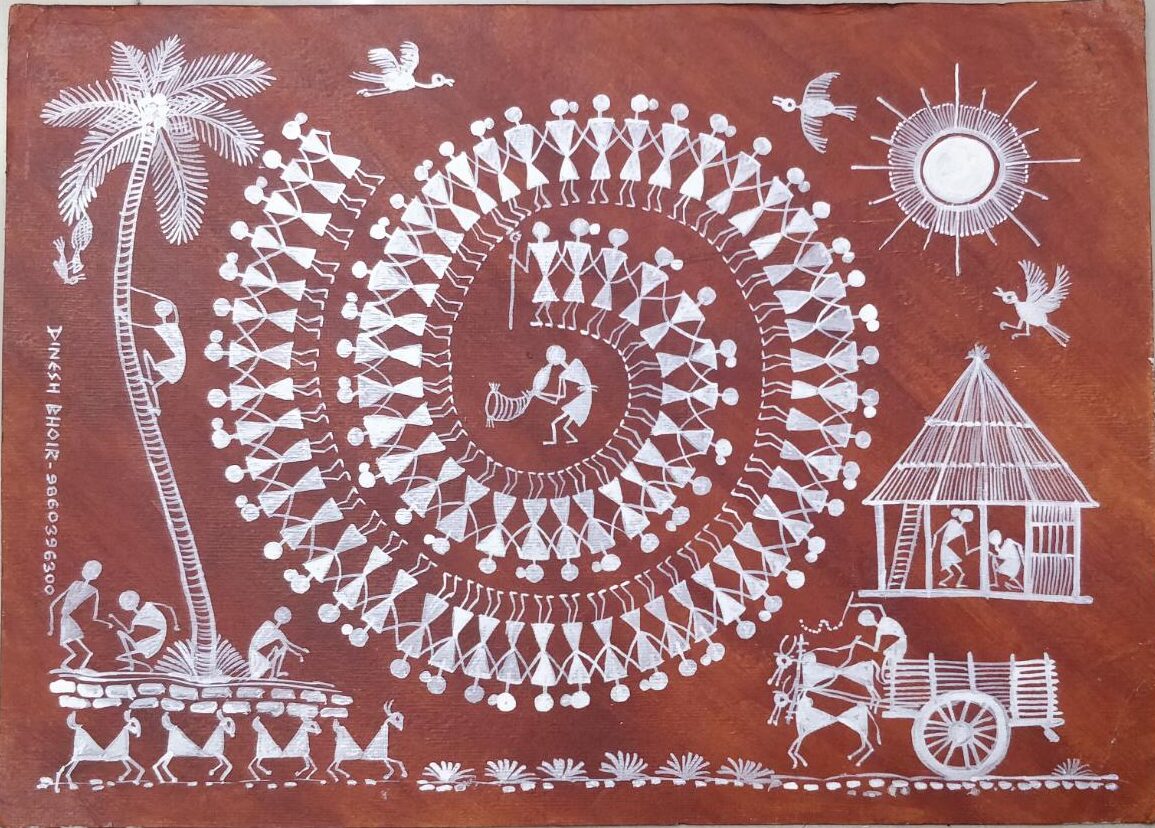DIFFERENT FORMS OF PAINTING – WORLI ART, MADHUBANI ART, GLASS PAINTING , FABRIC PAINTING AND VARIOUS FORMS OF PAINTING
Painting is one of the most ancient and diverse forms of visual art, and throughout history, various cultures have developed unique painting styles, each with its distinct characteristics and artistic expression. In this blog, we will explore five fascinating forms of painting – Worli Art, Madhubani Art, Glass Painting, Fabric Painting, and other diverse styles – each offering a glimpse into the rich cultural heritage and artistic ingenuity of different regions.
**1. Worli Art:**
Worli Art is a traditional folk art form originating from the Warli tribe of Maharashtra, India. The paintings are characterized by their simplistic style, using geometric shapes such as circles, triangles, and squares to depict everyday life and nature. Typically, white paint is used on a red ochre background, but modern iterations may incorporate additional colors. Worli Art is deeply rooted in tribal culture, representing the harmony between humans, nature, and their beliefs.
**2. Madhubani Art:**
Madhubani Art, also known as Mithila painting, hails from the Mithila region of Bihar, India. It is an ancient art form passed down through generations, predominantly created by women. The paintings feature intricate patterns, vibrant colors, and depictions of mythological and natural elements. Madhubani Art often adorns walls and floors during festivals and auspicious occasions, symbolizing good luck and prosperity.
**3. Glass Painting:**
Glass Painting is a unique art form where artists paint on glass surfaces, creating a translucent and captivating effect. The paintings can be done using acrylic or glass paints, and the final artwork can be displayed as a standalone piece or placed against a light source, producing a stained glass effect. Glass Painting allows artists to explore creativity with light and colors, resulting in stunning masterpieces that play with illumination and shadow.
**4. Fabric Painting:**
Fabric Painting involves decorating textiles with various pigments and dyes to create colorful and personalized designs. Artists can use a range of techniques such as tie-dye, block printing, or freehand painting to achieve different effects on fabric. This versatile form of painting allows for the creation of unique clothing, home decor items, and accessories, making it a popular choice for both artists and crafters.
**5. Various Forms of Painting:**
Beyond the aforementioned traditional and specialized forms, painting encompasses a wide array of techniques and styles, each with its allure and purpose. Some of the notable forms include:
- **Watercolor Painting:** Known for its transparent and delicate strokes, watercolors create subtle and ethereal compositions.
- **Oil Painting:** Oil paints offer richness and depth, allowing artists to create realistic and textured artworks.
- **Acrylic Painting:** Acrylic paints dry quickly and can be used on various surfaces, making them a versatile choice for artists.
- **Abstract Art:** Focusing on shapes, colors, and emotions rather than realistic depictions, abstract art encourages free expression and interpretation.
- **Portrait Painting:** Capturing the essence and emotions of individuals through portraiture remains a popular and challenging form of painting.
*Conclusion:*
Painting, in all its diverse forms, is a remarkable medium for human expression and creativity. From the tribal narratives of Worli Art to the intricate designs of Madhubani Art, the translucent beauty of Glass Painting, and the personalized touch of Fabric Painting, each form carries its cultural significance and artistic allure. As artists continue to explore and push the boundaries of painting, these traditional and contemporary styles will undoubtedly inspire generations to come.








Comments
Post a Comment